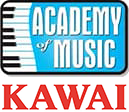Distorting Sound
Imagine you’re in Jamaica, circa sometime in the ‘60s and ‘70s. You want to make some cash, maybe selling wares and food, get a little bit of a party going. You need to attract customers to your spot, so how are you going to do it? Well, one way you might is by getting a sound system going - some speakers on a flatbed truck, for example. You need to play some music, so you [...]


